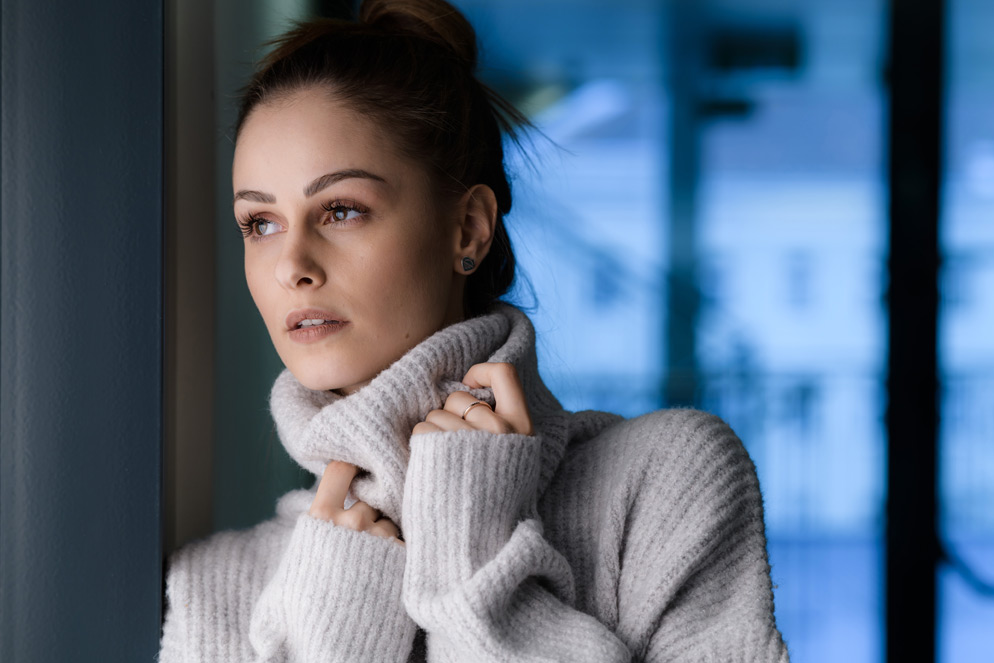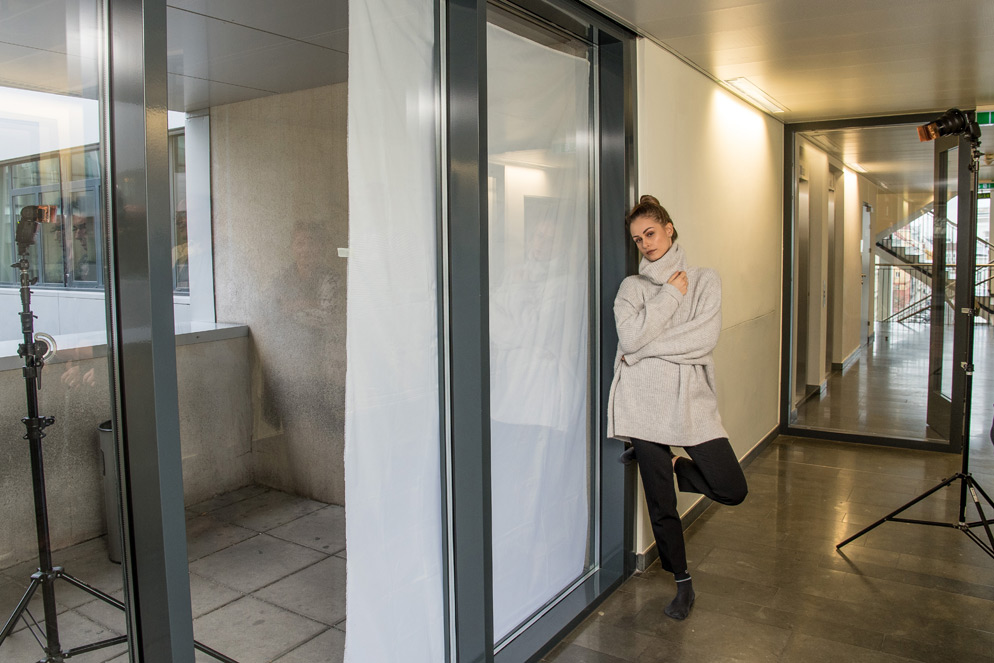Using White Balance and Lighting for a Cool Tone
Behind the scenes at portrait lighting workshops with Speedlight flash master David X. Tejada
D850, AF-S NIKKOR 105mm f/1.4E ED, 1/50 second, f/4.5, ISO 100, manual exposure.
The Portrait Workshop Series
If you're visiting for the first time, we're presenting here a dozen photos taken at portrait photography workshops by the noted commercial photographer and Nikon Creative Lighting System expert David X. Tejada.
To get the most from his tips, techniques and comments, be sure to take a few moments to check out our notes on flash, metering and the CLS before viewing the photos.
Turn to Blue
This photo was made to demonstrate the use of what David calls his "supersilk"—a 60-inch wide by three yards long piece of ripstop nylon, available from fabric stores, that functions as a large diffuser.
He taped it to the glass on the patio side and fired his SB-5000 through it to spread and soften the light on his model. The 5000 had a full CTO (Color Temperature Orange) gel on it to warm the light on her face. (In the setup picture you'll also see an SB-5000 that he decided not to fire for the final photo.)
This image demonstrates more than the use of the supersilk. Notice that the portrait's blue background is missing in the setup shot. That's because daylight shifts to blue when a camera's white balance is set to incandescent—and that's how David achieved the blue background. But why did he want it?
"We live in a three-dimensional world," he says, "and we can get a little three-dimensional feel to photos by the use of shadow and color. Warm tones come forward, blue tones recede, and that helps build in more depth. I like a sense of depth in an image."





